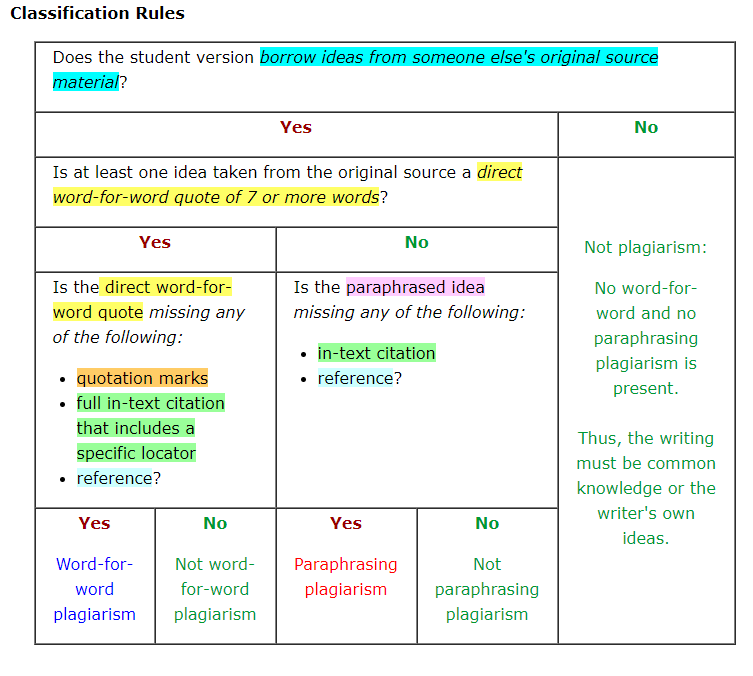帮助认识plagiarism:https://plagiarism.iu.edu/index.html
plagiarism
Recognize the basic difference between avoiding plagiarism and committing plagiarism
own ideas own words or common knowledge , just speak and write
someone else's words or ideas or something else ,acknowledging the source if directly copy or summarize happen
What are your own ideas? 确定是自己的,别人没有过的(有,可能自己不知道怎么办)
What is common knowledge?typically consists of well-known facts
so how about we do?
- A student must not adopt or reproduce ideas, opinions, theories, formulas, graphics, or pictures of another person without acknowledgment.
- A student must give credit to the originality of others and acknowledge an indebtedness whenever:
- Directly quoting another person's actual words, whether oral or written;
- Using another person's ideas, opinions, or theories;
- Paraphrasing the words, ideas, opinions, or theories of others, whether oral or written;
- Borrowing facts, statistics, or illustrative material; or
- Offering materials assembled or collected by others in the form of projects or collections without acknowledgment.
(quoted from Indiana University's Code of Student Rights, Responsi :D)
Non-Plagiarism Examples (like own words or some common konwledge)
Plagiarism Examples(like summarizes words written by others, or just directly copy words from others work, without give any quote )
注:quotes,citation,reference
word-for-word plagiarism
Recognize a proper quotation of someone else's words, and provision of the appropriate citation and reference.
- borrows ideas from the original source material, and
- takes seven or more words in sequence from the original source material, and
- lacks any of the following:
- quotation marks surrounding the words taken
- the full in-text citation with author name(s), the date, and must include the specific location within the source (e.g., page number or other locator) where the words are taken from
- the bibliographic reference.
examples:
When quoting from an electronic book where there are no page numbers but locations.
When quoting from a printed book where there are page numbers.
quatation mark arround the author's word, citation, references and one thing may be ignored--the lacater, which means locations or page numbers.
Paraphrasing plagiarism(not contain seven or more words)
commit Paraphrasing plagiarism if your writing or speech:
- borrows ideas from the original source material, and
- does not contain seven or more words in sequence taken from the original source material, and
- lacks any of the following:
- the in-text citation with author name(s) and date (specific locator is not required)
- the bibliographic reference.
注:Paraphrasing quation 的in-text citation 不需要包含locator
when summarizing the specific ideas or the overall idea or just the ideas from an entire book , we can write kike "A and B(2021) conclued that" or "A, B, and C(2021) state that" and add the bibliographic reference.
this works usually happens where writer's own ideas and the ideas of others are mixtured, so just give a citing for the source of other's ideas, well,one time may be fine
Not plagiarism
so Not plagiarism if it contains is :
- no word-for-word plagiarism, and
- no paraphrasing plagiarism, and
- no other form of plagiarism, such as borrowing illustrative material without acknowledging the source (e.g., photos, drawings, diagrams, etc.).
examples of 15 patterns of plagiarism: https://plagiarism.iu.edu/plagiarismPatterns/
for cirtification Test:
To Avoid Plagiarism in Writing a Paper, Key for colors is a usefull skill:
https://plagiarism.iu.edu/demoDocumentColorCoding.html